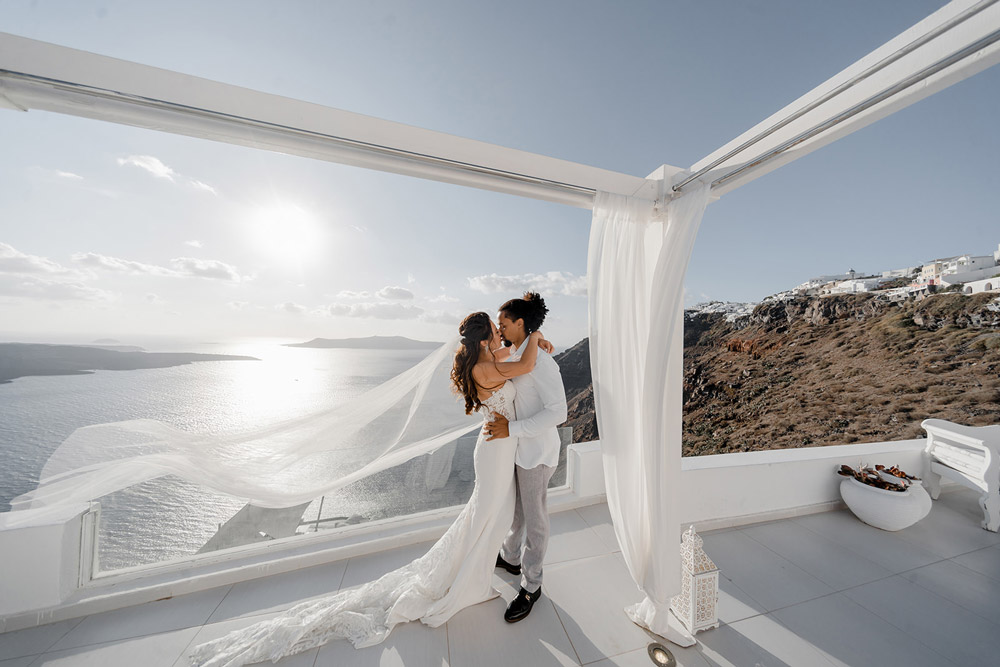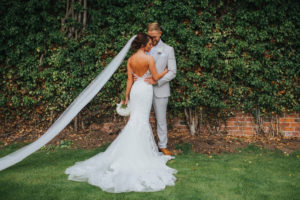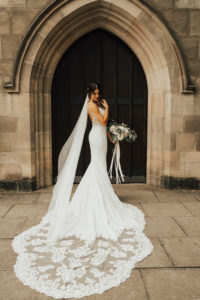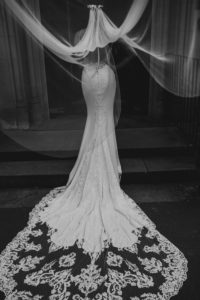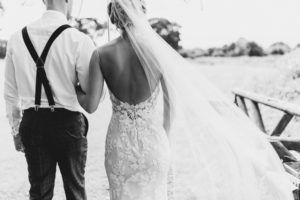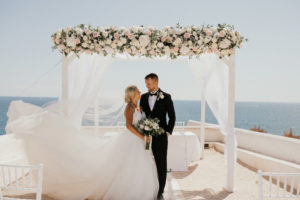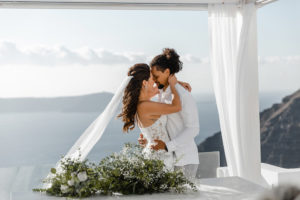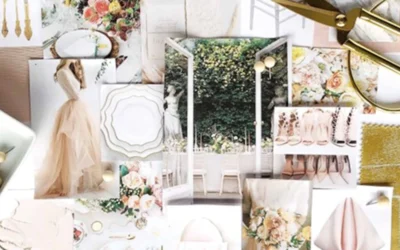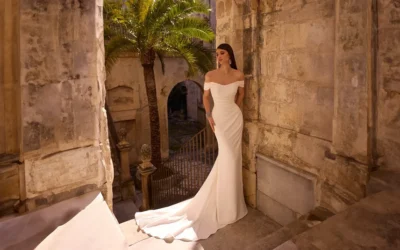So as we know, most brides wear a veil, but why?
The veil was introduced as a wedding tradition when people “wrapped brides from head to toe to represent the delivery of a modest and untouched maiden” which was supposedly meant to ‘hide away from evil spirits who might want to thwart her happiness.” However, for those who do not believe in the evil spirits, it is believe that the veil is simply used as an accessory.
Queen Victoria was the first modern monarch to marry in a veil, this was the moment that defined brides for centuries to come.
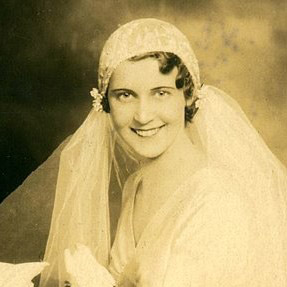
1920’s
1920 – Where dropped waist flapper gowns paired with short bob hairstyles were on trend, brides during the 1920s usually opted for a Juliet Cap to compliment their style. A Juliet Cap veil was often worn with long statement accessories that were edged with ornate beading and/or intricate lace.
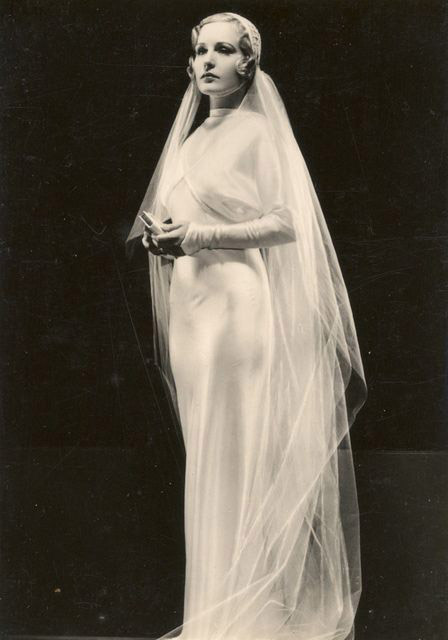
1930’s
1930 – Although the Juliet Cap continued to be popular throughout the 1930’s, however, much more delicate. Wedding dress styles became sleeker and more fitted with less emphasis on heavy lace. In terms of veils, they became much daintier, less tulle, less embellishment and more refined.
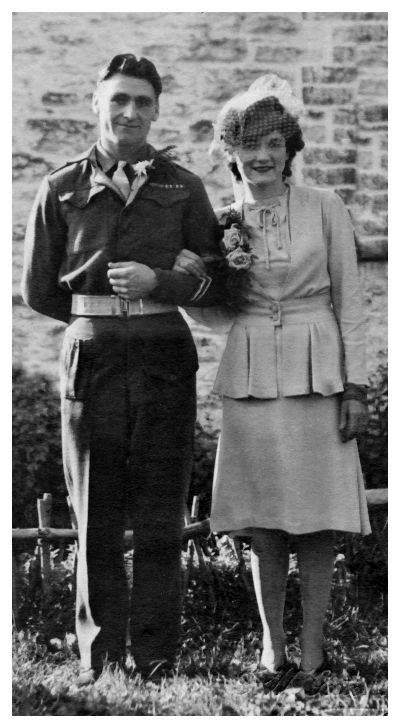
1940’s
1940’s – During this period luxury fabric was much harder to source therefore making it difficult to produce high quality wedding gowns and veils, this was all due to the war. Women were often rushing to wed during this time and often didn’t have time to prepare and therefore choose their best dress and hat, however, if a bride was able to wear a veil, it was often shorter, this is where the birdcages became more popular as they attached a birdcage to their favourite hat.
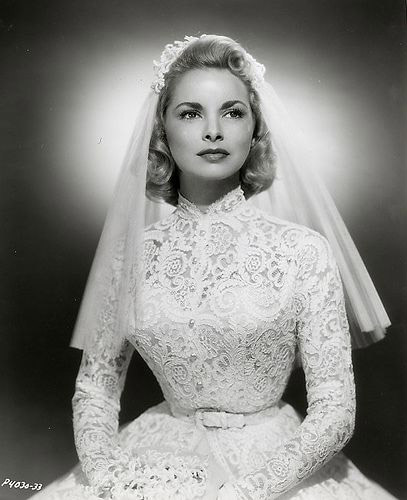
1950’s
1950’s – After the war veils made a comeback and brides opted for a shorter style veil to ensure their waist was emphasized even more. The fashion at this time was women wearing large skirts and fitted bodices to enhance waists, therefore a full volume veil worn on the top of a brides head, was the style of this era!
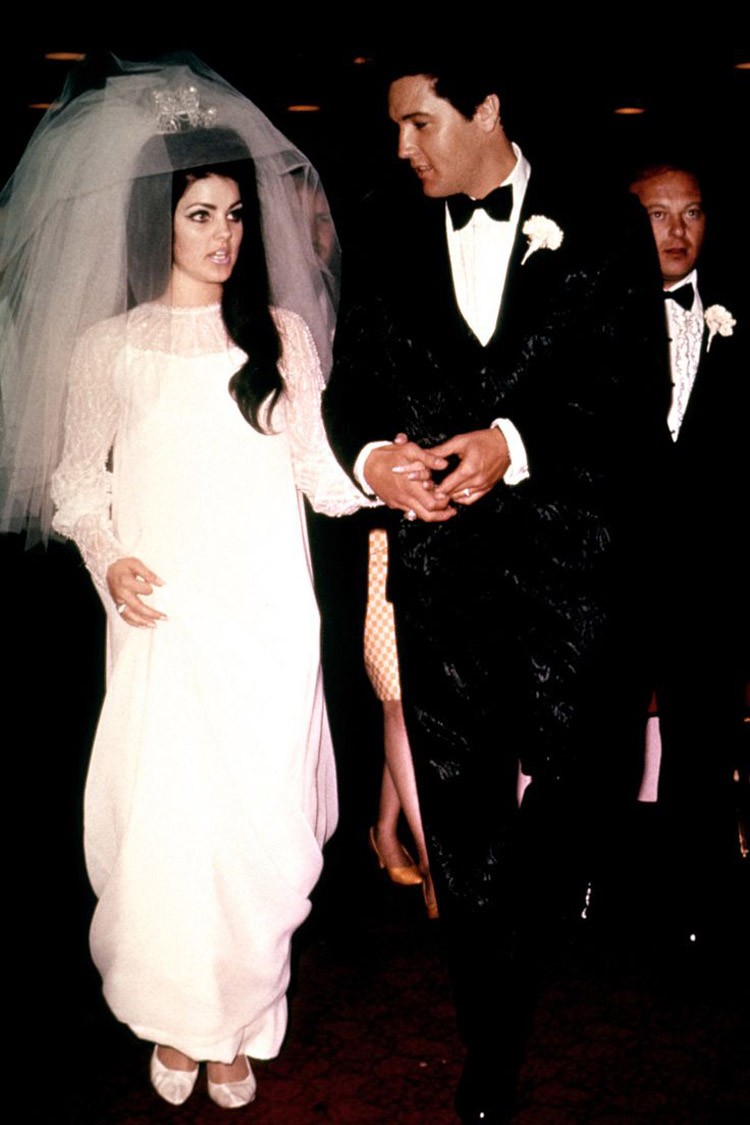
1960’s
1960’s – Beehives, unique and unusual! The bigger the hairstyle the better, and often veils had to balance out this statement look secured high on the brides head.
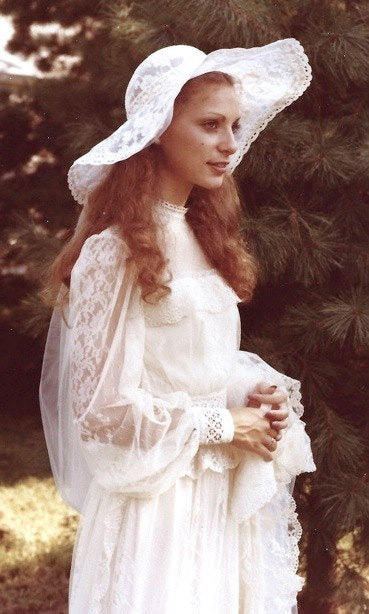
1970’s
1970’s – By this time, veils had completely disappeared and hats were now the new trend, boho style was very popular and hats helped bride create this look.
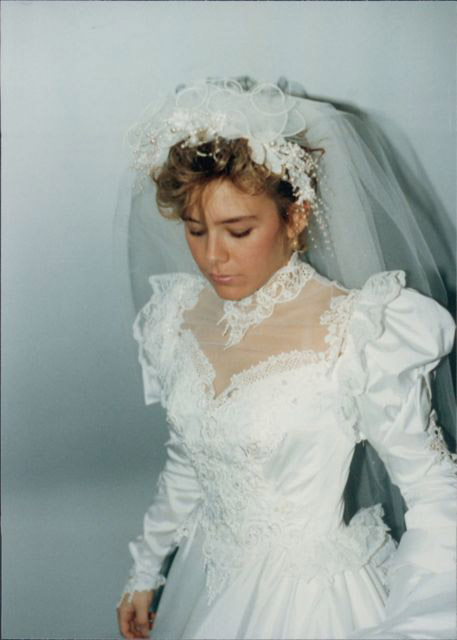
1980’s
1980’s – Frills and large frocks were the rage at this time, puff sleeves, dramatic skirts and triple layered veils, the bigger the better!
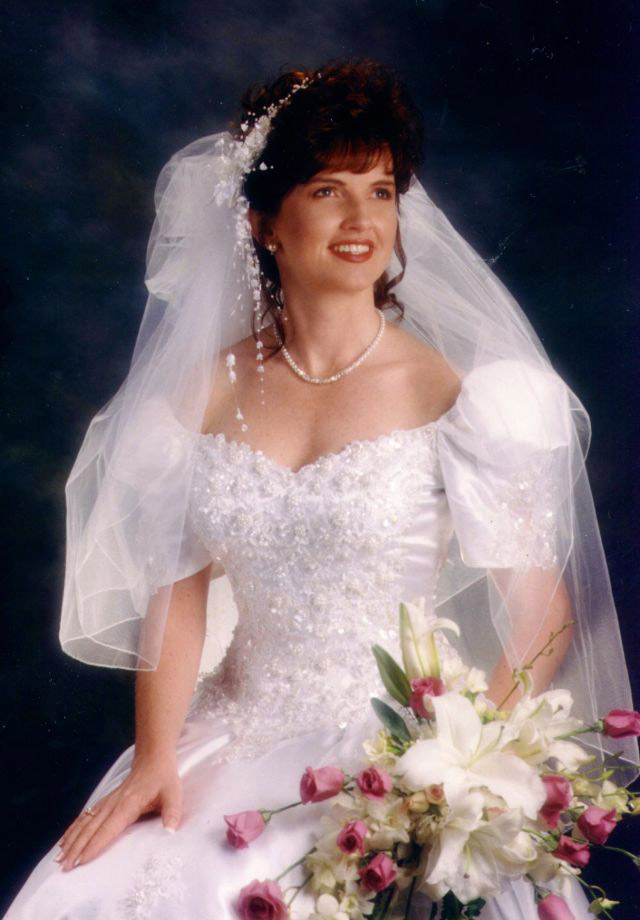
1990’s
1990’s – Similar to the 1980s style of wedding gowns, however veils became less dramatic and more delicate and feminine, usually brides opted for a shoulder length veil at this time to compliment their puff sleeved wedding gown.
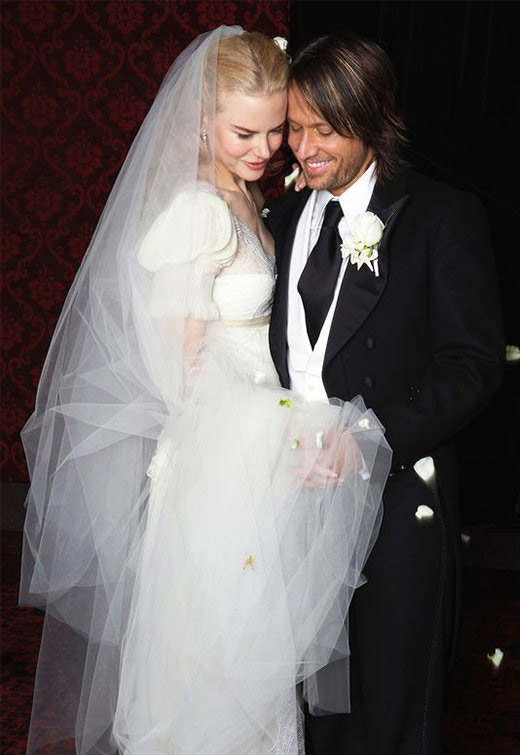
2000’s
2000’s – Styles became more sleek, streamlined and contrasted the recent popular 80s look, fitted dresses became popular and soft veils were now all the trend.
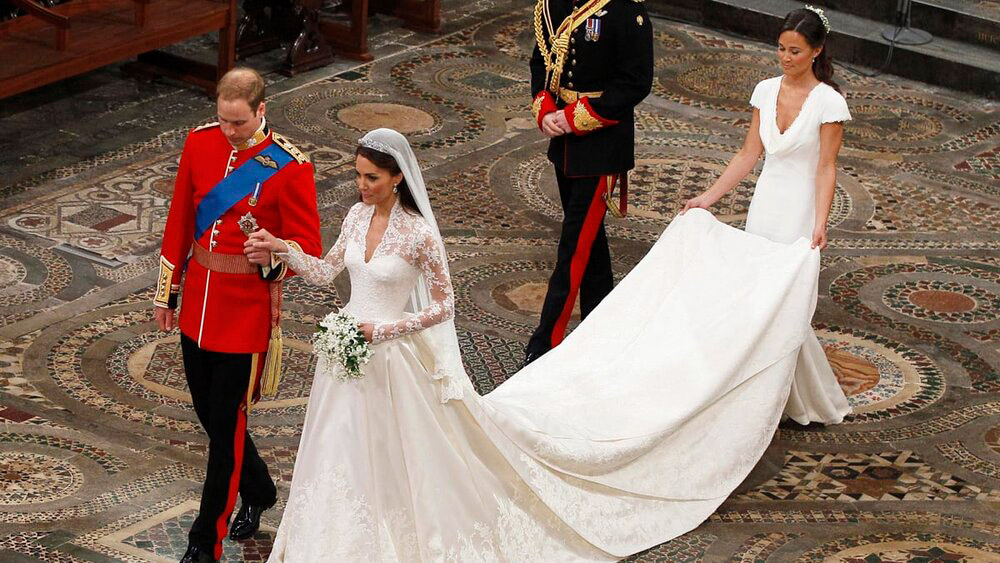
2010’s
2010’s onwards – Unique, personalised wedding gowns are the most recent trend, every bride wants to be different and usually, accessories are a way brides can really personalise their wedding day look! A range of veils are popular, but most brides are opting for long, cathedral length veils, dramatic to compliment their gown! However, lots of brides opt for a very simple veil, that doesn’t take away from their detailed wedding gown.
Pictures sourced from https://www.brittenweddings.com/blogs/news/72445635-veils-through-the-decades
The Modern Veil
Today women are empowered more than ever, with so many more options than women would have had years ago to create their own personal look and feel confident enough to do so. Many veil trends stem from celebrity styles, royalty, personal wealth and budget limitations. However, with today’s trends brides do not feel bound to follow ‘trends’ Veil prices range from £130 but our most expensive veil is £1400 – obviously this style of veil is extremely dramatic, with lots of delicate details and acts more as a cape than a veil!
What Length Veils can I get?
54” – This is the shortest style veil available, you can have this style in both single or double tier and the veil will finish at shoulder length. Brides will usually opt for this style if they want something very simple that doesn’t take away from any detailing on the dress, such as back detail they wish to show off.
72” – This length veil is know as our ‘fingertip veil’, where, like the name, it finishes at your fingertips (when your arms are straight by your side). Brides will usually opt for this veil if their dress detailing begins below the waist, so that the veil gives them a hint of detail to their dress if the top half is plain.
108” – This is the first, floor length veil available, your veil will finish just as your train starts, right at the hem of your dress. This is one of our most popular length veils, brides will usually choose a very soft, simply veil for this length, so that the veil is adding the ‘bridal feel’ they wish to have, but not taking any detail away from the dress.
126” – This is our medium length floor length veil, this length is usually paired with lace edged detailing or sparkle detailing scattered throughout. The bride who opts for this veil will often want a little more detail adding to their bridal look and will look for a veil to achieve this.
144” – This is the longest standard-length veil available, so a bride will opt for this as the most dramatic option. Often brides will match up lace to their dress or, will have a completely plain dress and a very dramatic veil so that they feel they have 2 different wedding day looks, one with and one without their veil.
If brides want a longer veil than a 144”, some of our designers offer a personalised service where we can measure exactly how much length you would like adding. This service is often used when a dress train is longer than standard and a bride wants her veil to finish at the end of the train or even after their train.
We hope this helps you understand why brides traditionally wear a veil with their wedding gown and how you can style a veil with your wedding dress and still create a unique, personal, modern bridal look!
Lots of love,
TDR Bridal Birmingham Xxxx
